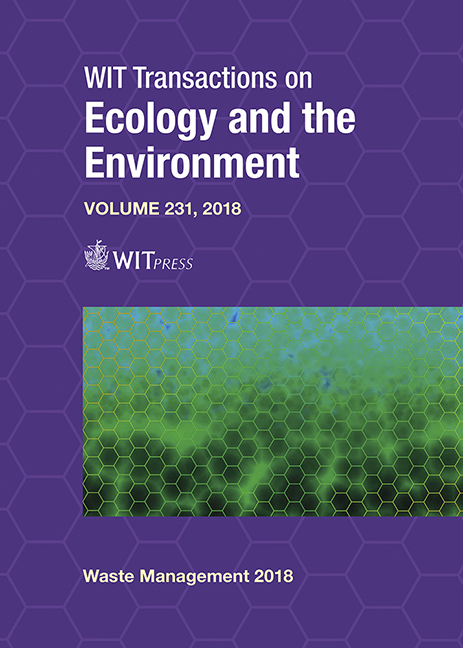THE FIRST CHEMICAL IDENTIFICATION OF POLYOLEFIN (PO) WASTE BLENDS USING INFRARED SPECTROSCOPY
Price
Free (open access)
Transaction
Volume
231
Pages
12
Page Range
415 - 426
Published
2019
Paper DOI
10.2495/WM180381
Copyright
WIT Press
Author(s)
SULTAN MAJED AL-SALEM
Abstract
Locally, the State of Kuwait is in need of good practices and national strategies that can take advantage of the accumulated solid waste, ridding the environment of various issues and stressors. In this work, compounded rolls of the various samples originating from plastic solid waste were used for the preparation of the test specimens. Samples were compounded to have the following percentages of virgin linear low density polyethylene and plastic film waste (wt./wt.%): 100/0, 75/25, 50/50, 25/75 and 0/100. The samples were compounded using blown film extrusion with a die head temperature of 175°C. Films of the different formulations were exposed to accelerated weathering in accordance with test method ASTM D 4329. Samples were mounted on the racks facing the ultra violet lamps with no empty spaces in the panels. This is in order to maintain a uniform repeatable test condition in accordance with cycle A procedure. The chemical printing of the evolved chemicals was achieved using Fourier Transform Infrared Spectroscopy and the spectra were recorded with a resolution of 4 cm-1 using Diamond Universal ATR attachment. Four interferogram scans were averaged to give the spectra from 500 to 5000 cm-1 using the Attenuated Total Reflection technique. A noted reduction in the carbonyl index determined from the FTIR spectra of the 75/25 samples supports the claim of the relative stability of the blend. This can lead to the development of a product from waste plastic material that reduced the burden of accumulation in developing and developed societies alike. In addition, the thermal properties determined along with the degradation kinetics parameters estimation revealed after the execution of this research project, have shown the stability of the blend for further development as a standalone product.
Keywords
plastic waste, polymer, solid waste, spectroscopy, carbonyl index, polyolefin





